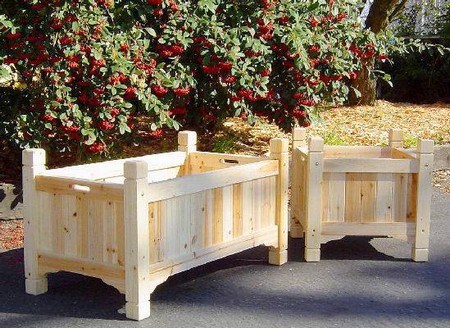If you have only very limited garden space, or you want fresh herbs through the winter, you will want to grow some plants in pots. They are never quite as happy as they are when in the open ground, but with a little skill you can keep them growing well.
In a large outdoor tub which will not need moving about you could use garden loam or a loam-based compost; if you do need to move it, use a lighter, peat-based compost. Herbs will grow quite well in either, though many gardeners swear by one or the other. I have always found peat-based composts give the best results, but if you prefer the loam-based, John Innes type, the herbs won’t mind!
Make sure any container, large or small, has adequate drainage, with holes in the base and crocks over the holes: it’s much easier to add water than to try to take it away. Drying out will, however, be a problem in dry weather and the smaller the container, the more difficult it will be to get the moisture level right. Be prepared for daily watering.

If you have no garden space at all, herbs can be grown in the house. If at all possible, keep them outside, on a balcony or even a windowledge. Otherwise, keep the pots in the lightest position available. They will all lean towards the light source, so every few days you should turn them round to keep them straight. Lack of light will lead to pale, drawn, sickly looking plants, and this will be a particular problem in winter, when light levels are low. Special horticultural electric light bulbs are available to supplement natural daylight: they are far more effective than ordinary or fluorescent lights because they transmit the correct part of the spectrum for plant growth. They are fairly expensive, but very worthwhile if you are trying to grow plants in a rather dim house (not everybody has nice, bright, sunny windowsills!).
If you want a variety of herbs indoors, 9 cm pots are probably the most practical size, though you should be prepared to replace plants as they outgrow these rather small containers. Use peat-based or loam-based compost, and give regular liquid feeds (any pot plant fertilizer will do). Keep the compost just moist at all times, and remember that overwatering kills more plants than underwatering.
Bringing potted herbs indoors is one way to keep fresh supplies available through the winter. Good pot subjects are parsley, basil, thyme, savory, marjoram and possibly (for a short time) rosemary and sage. If you have the facilities, raise seedlings in late summer for potting on and growing indoors in winter. This is more satisfactory than digging existing plants up and trying to pot thorn.